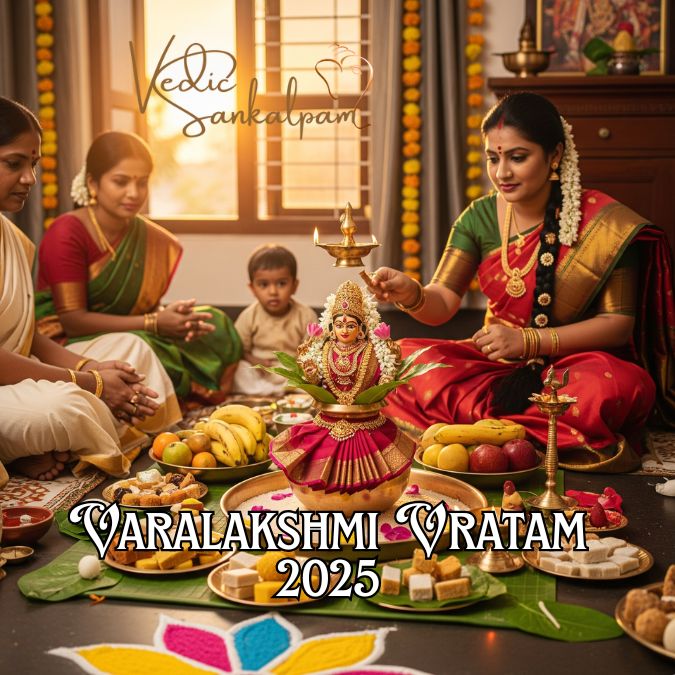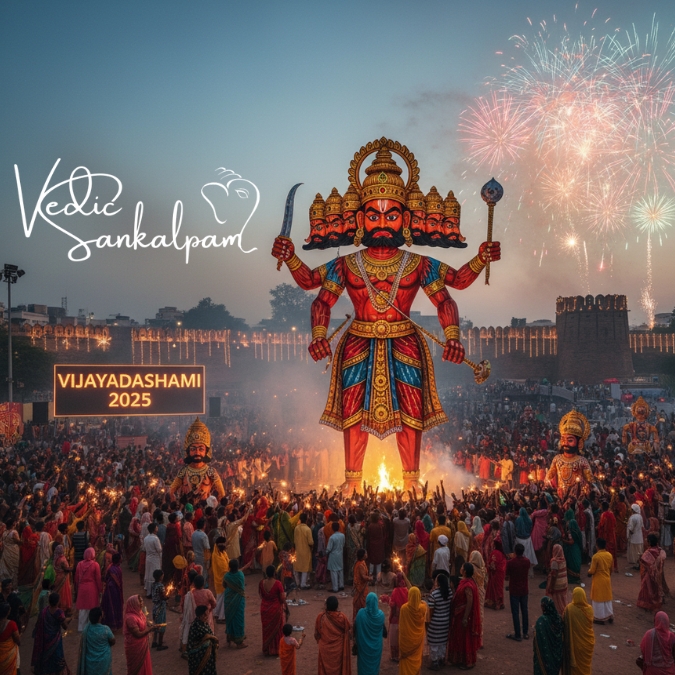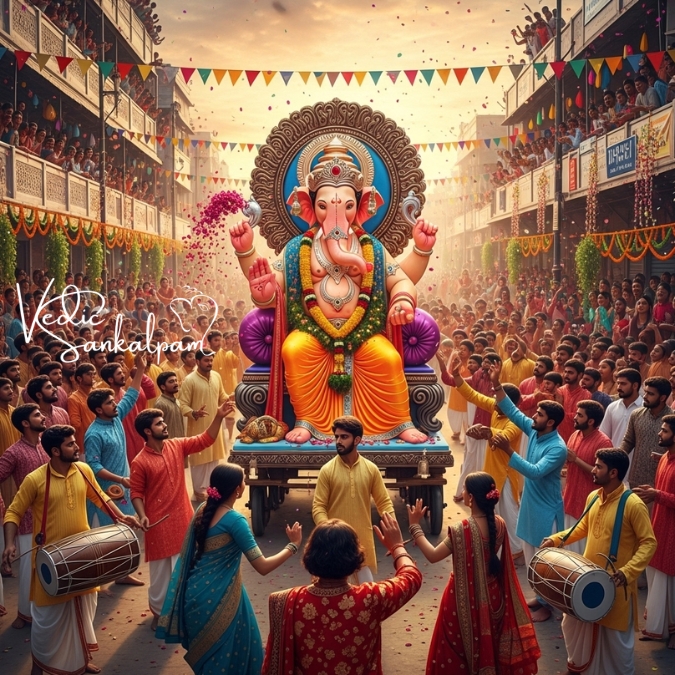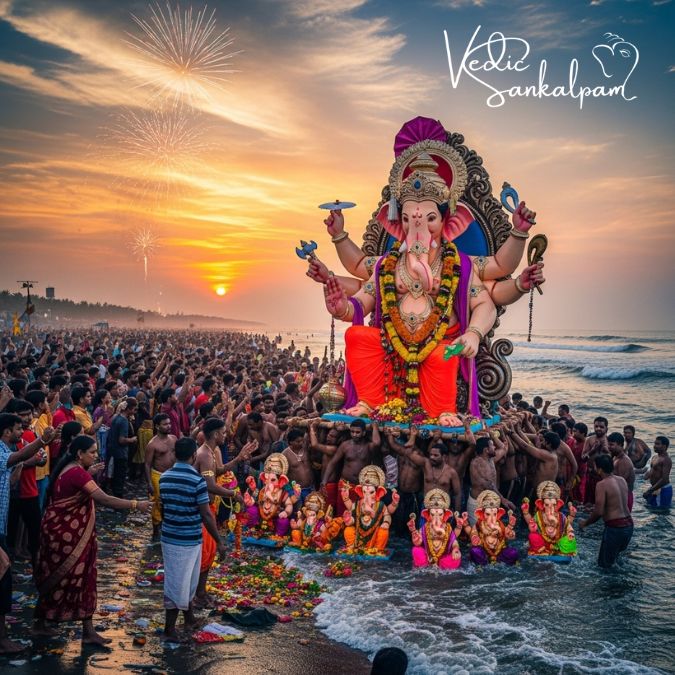Varalakshmi Vratam is one of the most auspicious Hindu festivals dedicated to Goddess Lakshmi, the bestower of boons, wealth, and prosperity. Celebrated predominantly in the southern states of India such as Andhra Pradesh, Telangana, Karnataka, Tamil Nadu, and parts of Maharashtra, this festival holds immense spiritual significance for married women who perform the vrat with utmost devotion for the well-being of their families. In 2025, Varalakshmi Vratam will be observed with grandeur and devotion across the country.
Varalakshmi Vratam 2025 Date and Timings
According to the Hindu calendar, Varalakshmi Vratam is observed on the second Friday of the Shravana month, which falls before the full moon day (Purnima).
-
Varalakshmi Vratam 2025 Date: 8 August 2025
-
Shubh Muhurat for Puja:
-
Puja Muhurat: 06:00 AM – 08:30 AM (Varies according to location)
-
Pradosh Kaal: 06:45 PM – 08:15 PM
-
Nishita Kaal: 12:05 AM – 12:45 AM (next day)
-
Performing the puja during the morning hours is considered most auspicious as per shubh lagna.
Significance of Varalakshmi Vratam
The word Varalakshmi means Goddess Lakshmi who grants boons (Varam). It is believed that observing this vrat brings Ashta Lakshmi blessings, representing eight forms of prosperity:
-
Aadi Lakshmi – Eternal wealth
-
Dhana Lakshmi – Monetary wealth
-
Dhanya Lakshmi – Food and nourishment
-
Gaja Lakshmi – Power and strength
-
Santana Lakshmi – Progeny
-
Veera Lakshmi – Valor and courage
-
Vidya Lakshmi – Knowledge and wisdom
-
Vijaya Lakshmi – Success and victory
Women observe this vrat for the health, happiness, and longevity of their husbands and to ensure prosperity in their households.
Varalakshmi Vratam Rituals and Preparations

Observing Varalakshmi Vratam involves elaborate rituals, preparation, and deep devotion. Below is a detailed step-by-step guide for performing the puja:
1. Pre-Puja Preparations
-
Cleaning the House: A day before, the entire house is cleaned thoroughly as it is believed that Goddess Lakshmi resides only in clean and pure places.
-
Decorating the Puja Area: Rangoli or kolam is drawn at the puja spot.
-
Kalash Preparation: A Kalash is placed as a symbolic seat for the Goddess. The Kalash is filled with water or rice, decorated with turmeric, kumkum, betel leaves, and mango leaves, and topped with a coconut wrapped in a red cloth.
2. Dressing the Goddess
-
The Kalash is adorned with a saree and decorated to resemble Goddess Lakshmi. Jewelry, flowers, and garlands are used to beautify the idol.
3. Performing the Puja
-
Sankalpam: Devotees take a vow to perform the vrat with dedication.
-
Invocation: Chanting of Lakshmi Ashtottara Shatanamavali (108 names of Goddess Lakshmi) while offering flowers.
-
Offerings: Fresh fruits, sweets like payasam and laddu, and special dishes are offered.
-
Vrat Katha Recitation: Listening to or narrating the Varalakshmi Vratam story is an integral part of the ritual.
-
Aarti: The puja concludes with aarti and distribution of prasadam.
Varalakshmi Vratam Story (Vrat Katha)
According to the legend from the Skanda Purana, once Goddess Parvati asked Lord Shiva about a vrat that could grant health, wealth, and prosperity. Lord Shiva narrated the story of Charumati, a pious woman from Magadha, who was instructed by Goddess Lakshmi in her dream to perform the Varalakshmi Vrat. Charumati invited her friends and neighbors, performed the vrat with devotion, and received immense blessings. Since then, women have been observing this vrat for familial well-being and abundance.
Traditional Offerings and Naivedyam for Varalakshmi Vratam
Some common offerings include:
-
Pulihora (tamarind rice)
-
Chakkara Pongal (sweet rice)
-
Payasam (kheer)
-
Vada and Appam
-
Seasonal fruits and coconut
Varalakshmi Vratam in Different States
-
Andhra Pradesh & Telangana: Elaborate decorations, devotional songs, and offering of Panakam (jaggery water).
-
Karnataka: Women wear traditional silk sarees and gold jewelry; the puja is followed by inviting sumangalis (married women) for haldi-kumkum.
-
Tamil Nadu: Unique kolams are drawn, and special emphasis is given to sweet pongal as naivedyam.
-
Maharashtra: The vrat is observed as Mahalakshmi Vrata with similar rituals.
Do’s and Don’ts for Varalakshmi Vratam 2025
Do’s
-
Take a head bath early in the morning before puja.
-
Wear traditional attire while performing the vrat.
-
Use fresh flowers for offerings.
-
Maintain purity in thoughts and actions during the vrat.
Don’ts
-
Avoid consuming onion, garlic, and non-vegetarian food on the vrat day.
-
Do not leave the vrat incomplete; perform it with full dedication.
-
Avoid breaking the coconut after sunset.
Benefits of Observing Varalakshmi Vratam
-
Spiritual Benefits: Enhances devotion, inner peace, and spiritual connection with Goddess Lakshmi.
-
Material Benefits: Brings prosperity, wealth, and success in endeavors.
-
Family Well-being: Ensures harmony, health, and long life for family members.
Conclusion
Varalakshmi Vratam 2025 is not just a festival but a spiritual experience that strengthens faith, brings positivity, and blesses households with abundance. Observing this vrat with sincerity, devotion, and adherence to rituals invites the divine presence of Mahalakshmi into one’s life, ensuring prosperity and happiness throughout the year.









